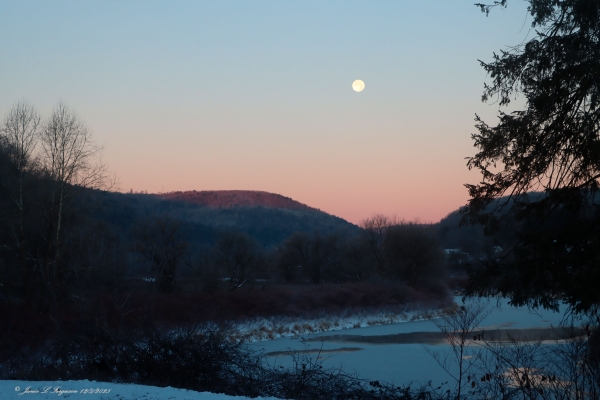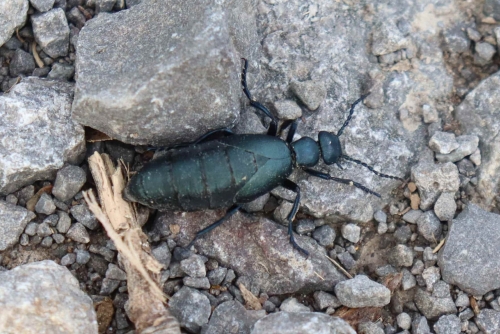The toxic chemical cantharidin causes serious blisters and can kill a mammal if ingested accidently
By Bob Confer
During October and November you will encounter an insect that’s certain to attract attention. Whatever you do, don’t touch it.
A common sight in some locales, especially on trails and along forest edges, it is a jet-black, flightless creature that crawls on the ground and might have you thinking that it’s a giant ant.
That insect, which can be two-thirds of an inch to more than an inch in length, is not an ant. It’s the American oil beetle.
Oil beetles are members of the blister beetle family, a telling name of the danger they pose.
When handled, they partake in something called “reflexive bleeding” or “auto hemorrhaging”. A yellowish, oily substance exudes from the joints of their legs. This stuff is called hemolymph, which is the insect world’s equivalent of blood. It is predominantly water, but it also contains nutrients, such as carbohydrates and lipids, and other things necessary for life, like hormones.
The hemolymph of oil beetles contains a potent chemical called cantharidin. If you get it on your hands, it will create blisters. They won’t appear immediately. Give them 24 to 48 hours, at which time they will be joined by pain and swelling. Those ugly blisters will disappear after 7 to 10 days.
Cantharidin is so repulsive to the taste buds of mammals and birds that most won’t even try to eat oil beetles. Their consumption is typically incidental, such as when a horse eats hay upon which the beetles are stationed (depending on their stage of life, oil beetles are attracted to the flowers of alfalfa and the eggs of grasshoppers laid on such crops). The harvest of hay will kill the beetles, but it doesn’t kill the cantharidin – it will linger for months after the death or crushing of the insect.
Horses that consume cantharidin-laden hay will develop sores or blisters on their tongues and in their mouths. They will also experience a wide array of ailments, such as fever, malaise, increased heart rate, respiratory struggles, colic, dehydration, diarrhea, bloody stool, miscarriage, and painful urination. Left untreated, horses suffering from such poisoning have a 65% fatality rate. Treatment is quite limited, though: No antidote exists and equines are only comforted with fluids, pain relief, and monitoring. Cantharidin is so toxic that consuming as few as 5 crushed beetles or their juices can be upsetting to the average-sized horse and just 20 of them could be lethal.
Such poisoning of horses is a relatively rare occurrence, but it happens enough. In 2015, 5 horses died in an outbreak in North Carolina. Two years later, a half dozen more passed in that same state, attributed to a specific hay harvest.
Cantharidin is no joke. Not only can it cause blisters or even kill, it is powerful enough to have a variety of medicinal purposes. Up until it was removed from the US marketplace in 1962, it was used for wart removal (as it still is in some Asian countries today). Applied to a wart, it creates a blister that consumes the wart and will cause the blemish to fall off. In recent years, quite a few studies have been done upon cancerous animals using cantharidin. Positive results might be paving the way for its use as a cancer drug in the future.
The oil beetle’s story doesn’t end there. It has an interesting life cycle that’s almost as unbelievable as its poison. Its small larva will use a pheromone to mimic the scent of a female bee, a species known as the solitary bee. When a male bee comes around to investigate, the tiny larva will grab on to hitch a ride. When that boy bee finally meets a girl bee, the beetle larva will move over to the female and go for a ride back to her nest. There, the baby beetle makes a home where it will eat nectar, pollen, and bee eggs and larvae to beef up for its transformation to its adult form.
It’s that adult form which you’re seeing now. When one crosses your path this fall, look but don’t touch. Like many things in nature, their beauty and simplicity belie their danger.

Bob Confer is the founder of Exploring the Western New York Wilds, sharing his lifetime of experiences and curiosity of the natural world around us. You can reach him anytime, Bob@Conferplastics.com






